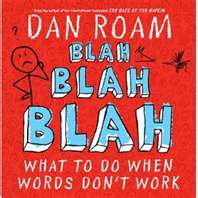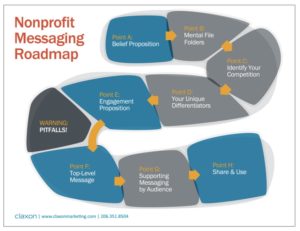
In January, we held our monthly Tune-Up Tuesday meet-up at The Hearing, Speech and Deafness Center in Seattle where we reviewed the Messaging Roadmap and discussed how to relate it to participants’ organizations. Below is a re-cap of our lively discussion.
[gravityform id=”3″ ajax=”true”]
(Note: This month we also presented at AFP Washington’s Martini Mondays where we discussed the Top 5 Nonprofit Messaging No No’s. This re-cap includes some questions and concerns about nonprofit messaging that came out of that presentation as well.)
Common Questions and Concerns about Nonprofit Messaging
What is the basic difference between a tagline and an elevator pitch?
A tagline is read not said.
An elevator pitch is said.
What is the difference between how we’d write a mission statement and how we’d write top-level messaging?
Most mission statements (but not all!) speak to the what and the how. Top-level messaging relates to the why and speaks to the hearts of your audience.
Note: There is great value in the process of creating mission and vision statements internally. To develop great messaging, you need to go one step further. Take the work that goes into creating your mission and value and make it compelling.
When we try to do messaging, it gets picked apart and everyone has a word to add.
That’s why we discourage messaging by committee! Messaging is about what your target audiences want/need to hear, not what internal stakeholders want them to know. This is a tricky, and important, distinction to make.
How do we convince our board to see the value of marketing and messaging work in particular?
First of all, don’t use the word Marketing. Marketing and Fundraising are part of an engagement continuum. Marketing is critical to any organization that wants to engage new supporters and retain current ones.
Even within our Fundraising Department, we say different things. How do we get on the same page?
Many organizations have departments that work in silos. If you are in Fundraising you may find that your major gifts team isn’t on the same page as your general fundraising team, for example. Getting people to the point where it’s about the audience perspective is key. Start by writing a job description for your fundraising team (see this post for more on this idea) – including the role of your major gift officers – showing how everyone has a piece in accomplishing your goals. Remember: Your audience doesn’t care about your silos; they care about how they can support what you’re doing.
How do we get our messaging shorter and more impactful?
- Often we have the tendency to speak to the what. We lead with what we do instead of leading with what we believe. If you are in Microfinance you could lead with “We believe poverty can be eradicated. Microfinance is a powerful tool that can help us do that.”
- Ask your supporters what resonates with them using surveys or focus groups…or just pick up the phone and do a quick, informal check-in! Asking those further away from the day to day work will often speak to the why of what you do. (Plus, it’s a great cultivation tool!)
- Be careful not to pack your everything into your messaging. Often, board and staff are nervous about leaving something off. It feels really uncomfortable to not talk about everything.
Our current messaging is just not resonating. What should we do?
First, start by going back to the why (Point A on the Messaging Roadmap). You need everyone in your organization to come to an agreement on an answer to the following questions: Why do we exist? What would be different in our community if we didn’t exist?
How do you talk without jargon?
Every year, Lake Superior State University publishes its Banished Words list—make sure to avoid these! In the end, speaking to your audience’s heart is the key. Turn statistics into stories. For example, if you’ve been around since 1850, how many generations have you helped?
Handouts
- Messaging Roadmap
- Messaging Framework
[gravityform id=”4″ ajax=”true”]
Nonprofit Messaging Resources
- Watch AFP Washingon’s Martini Mondays Nonprofit Messaging No No’s.
- Subscribe to Nancy Schwartz’s Getting Attention Blog.
- Participate in Claxon’s 9-Week Nonprofit Messaging Bootcamp! (Here’s how to get started: 1. Sign-up for Tune-Up Tuesdays Video Series, 2. Read our blog starting with Week #1 of the Bootcamp and 3. Sign-up for next month’s Tune-Up Tuesdays Meet-up in Seattle.)






